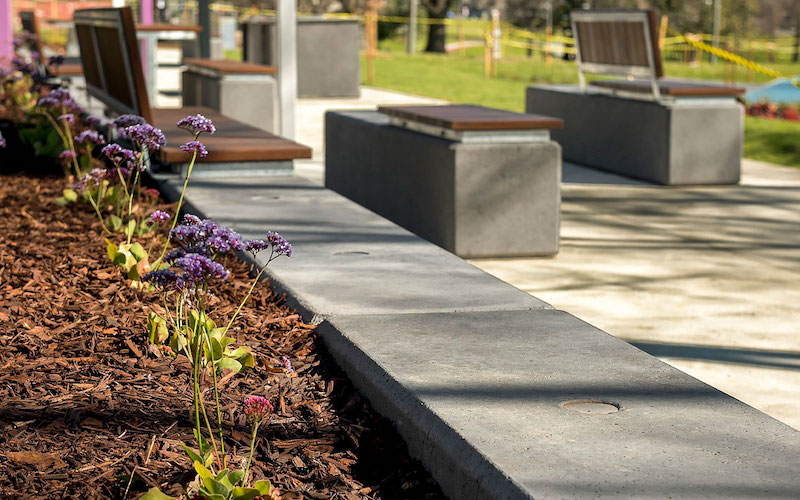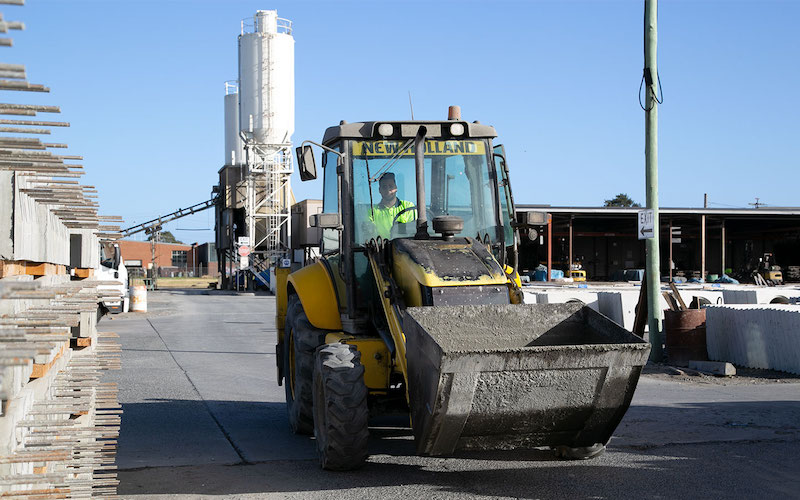Using toxic waste materials to lower carbon emissions
A Sustainability Journey, Building, Construction, Design, Engineering
A Sustainability Journey, Building, Construction, Design, Engineering
This article was contributed by SVC Products Pty Ltd.
The construction sector, known for its significant resource consumption and greenhouse gas emissions, has been increasingly exploring innovative techniques to reduce its impact. One such solution gaining traction is the incorporation of supplementary cementitious materials (SCMs) into concrete. This effectively reduces the proportion of standard cement, which is the component within concrete that contributes most to carbon pollution.
A precast concrete manufacturer and supplier of building materials to the construction industry, SVC Products has actively adopted SCMs into the composition of their concrete products. Having completed comprehensive testing to ensure that products containing SCMs were still compliant and fit-for-purpose, SVC now passes on the carbon savings and environmental benefits to their clients in civil and landscape construction, hoping to encourage other industry peers to do the same.
SCMs are materials that, when combined with cement in concrete production, enhance its properties and improve its environmental performance. They are typically by-products of other industrial processes, and their use in concrete diverts hazardous waste from landfills while also reducing the demand for virgin raw materials. Common SCMs include fly ash, slag cement, and silica fume. These materials can replace a portion of the cement content in concrete, leading to lower overall carbon emissions and energy consumption during the manufacturing process.
Reduced Carbon Footprint: The production of traditional cement, a key component of concrete, is a major source of carbon dioxide emissions due to the energy-intensive processes involved. By replacing a portion of cement with SCMs, precast concrete manufacturers can significantly reduce their carbon footprint. SCMs require less energy to produce, leading to a lower overall carbon footprint of the final concrete product.
Waste Utilisation: Incorporating SCMs diverts industrial waste from landfills and reduces the environmental burden associated with waste disposal. Materials like fly ash and slag, which would otherwise be discarded, are given a second life as valuable components in sustainable construction.
Conservation of Natural Resources: Traditional concrete production relies heavily on virgin raw materials like limestone and clay. By integrating SCMs, manufacturers can reduce the demand for these finite resources, contributing to the preservation of natural ecosystems and reducing the environmental impact of extraction.
Improved Air Quality: The production of cement is associated with various air pollutants, including particulate matter and sulfur dioxide. SCMs help lower the cement content in concrete, thereby reducing the emissions of these harmful pollutants and improving air quality around production facilities.

Enhanced Durability: SCMs improve the long-term durability and performance of concrete by reducing the permeability of the material, making it more resistant to corrosion and deterioration. This, in turn, extends the lifespan of structures, reducing the need for frequent maintenance and replacement.
Energy Savings: Utilising SCMs in precast concrete manufacturing requires less energy during production, due to the lower processing temperatures required for these materials. This not only reduces carbon emissions but also conserves energy resources.
Introducing SCMs into concrete is not as simple as it sounds. Any changes to concrete mix designs must undergo multiple iterations and rigorous testing, ensuring that the final products still retain the required performance and compliance characteristics for their designated function. Manufacturing processes must also be carefully monitored and tested, ensuring that any alterations do not render them unfeasible.
SVC’s range of civil construction products is produced using concrete made with blended cement, containing a minimum of 30% SCMs (fly ash and slag). In the 2022 financial year, based on their usage of 468 tonnes of blended cement, SVC was able to achieve a CO2 reduction of approximately 98 tonnes.

In an era marked by environmental consciousness and sustainable development, the construction industry is undergoing a transformation. The integration of supplementary cementitious materials in concrete manufacturing stands as a prime example of innovation that addresses both environmental concerns and the need for sustainable practices. By reducing carbon emissions, conserving natural resources, and enhancing the durability of structures, SCMs pave the way for a greener and more resilient future for the construction sector, shaping a more sustainable built environment for generations to come.
Find out more about SVC Product’s Sustainability Efforts here.
This is an article from a SustainabilityTracker.com Member. The views and opinions we express here don’t necessarily reflect our organisation.